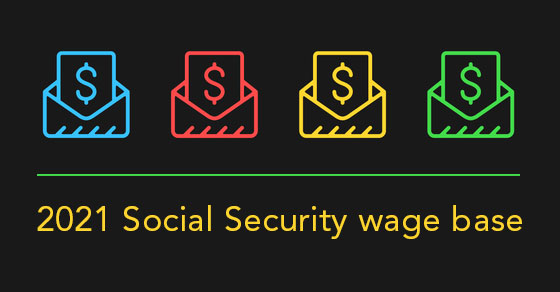The COVID-19 relief bill, signed into law on December 27, 2020, provides a further response from the federal government to the pandemic. It also contains numerous tax breaks for businesses. Here are some highlights of the Consolidated Appropriations Act of 2021 (CAA), which also includes other laws within it.
Business meal deduction increased
The new law includes a provision that removes the 50 percent limit on deducting business meals provided by restaurants and makes those meals fully deductible.
As background, ordinary and necessary food and beverage expenses that are incurred while operating your business are generally deductible. However, for 2020 and earlier years, the deduction is limited to 50 percent of the allowable expenses.
The new legislation adds an exception to the 50 percent limit for expenses of food or beverages provided by a restaurant. This rule applies to expenses paid or incurred in calendar years 2021 and 2022.
The use of the word “by” (rather than “in”) a restaurant clarifies that the new tax break isn’t limited to meals eaten on a restaurant’s premises. Takeout and delivery meals from a restaurant are also 100 percent deductible.
Note: Other than lifting the 50 percent limit for restaurant meals, the legislation doesn’t change the rules for business meal deductions. All the other existing requirements continue to apply when you dine with current or prospective customers, clients, suppliers, employees, partners, and professional advisors with whom you deal (or could engage with) in your business.
Therefore, to be deductible:
- The food and beverages can’t be lavish or extravagant under the circumstances, and
- You or one of your employees must be present when the food or beverages are served.
If food or beverages are provided at an entertainment activity (such as a sporting event or theater performance), either they must be purchased separately from the entertainment or their cost must be stated on a separate bill, invoice, or receipt. This is required because the entertainment, unlike the food and beverages, is nondeductible.
PPP loans
The new law authorizes more money toward the Paycheck Protection Program (PPP) and extends it to March 31, 2021. There are a couple of tax implications for employers that received PPP loans:
- Clarifications of tax consequences of PPP loan forgiveness. The law clarifies that the non-taxable treatment of PPP loan forgiveness that was provided by the 2020 CARES Act also applies to certain other forgiven obligations. Also, the law makes clear that taxpayers, whose PPP loans or other obligations are forgiven, are allowed deductions for otherwise deductible expenses paid with the proceeds. In addition, the tax basis and other attributes of the borrower’s assets won’t be reduced as a result of the forgiveness.
- Waiver of information reporting for PPP loan forgiveness. Under the CAA, the IRS is allowed to waive information reporting requirements for any amount excluded from income under the exclusion-from-income rule for forgiveness of PPP loans or other specified obligations. (The IRS had already waived information returns and payee statements for loans that were guaranteed by the Small Business Administration).
Much more
These are just a couple of the provisions in the new law that are favorable to businesses. The CAA also provides extensions and modifications to earlier payroll tax relief, allows changes to employee benefit plans, includes disaster relief, and much more. Contact us if you have questions about your situation.







